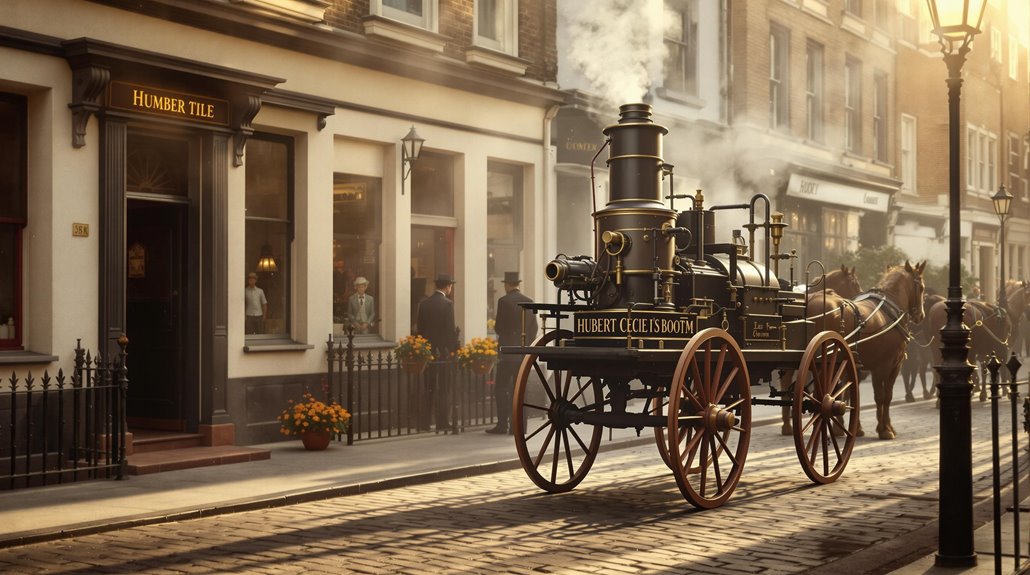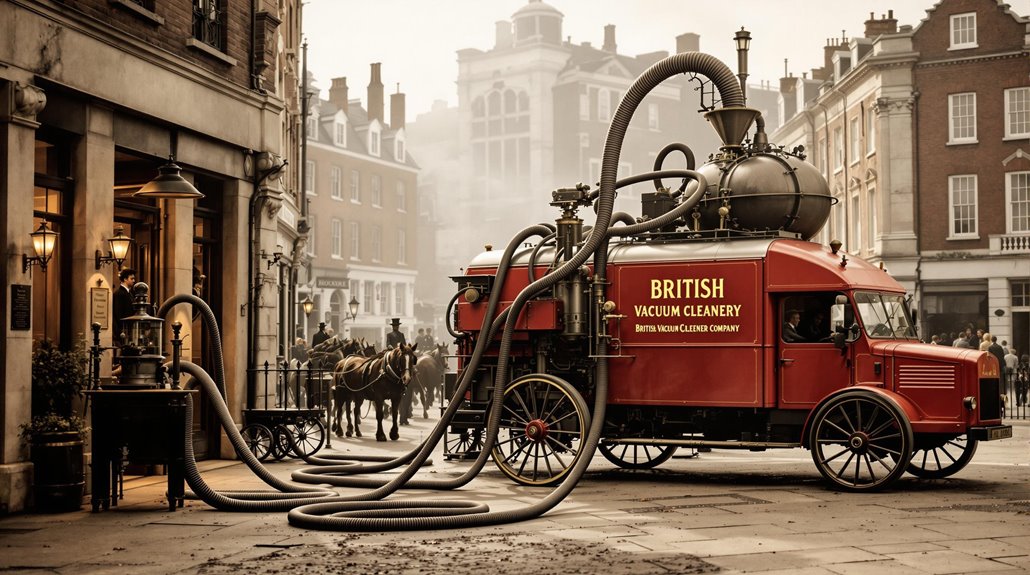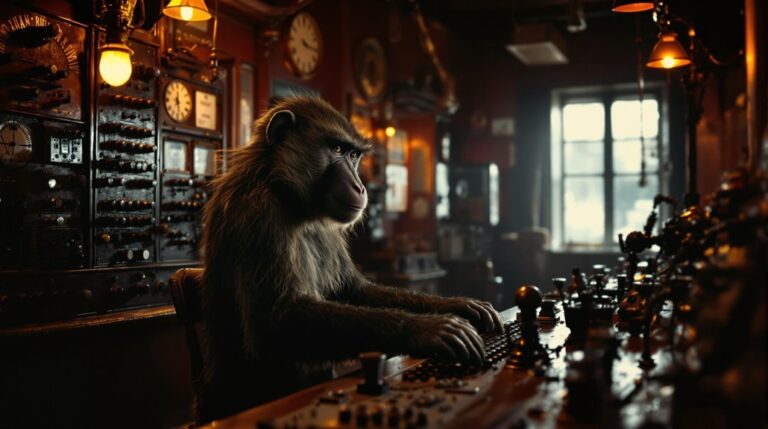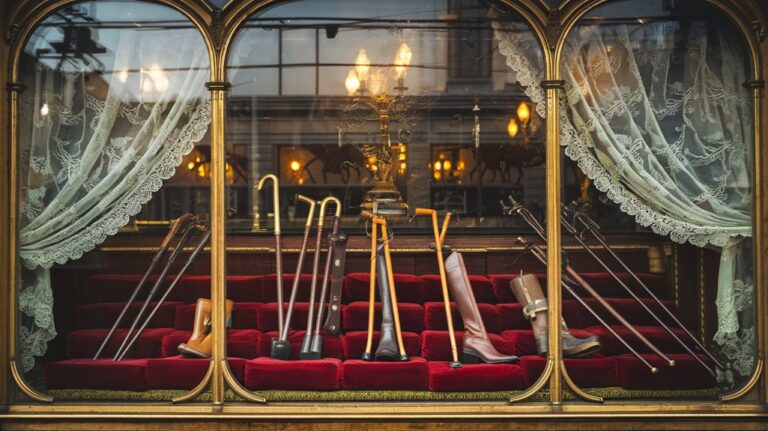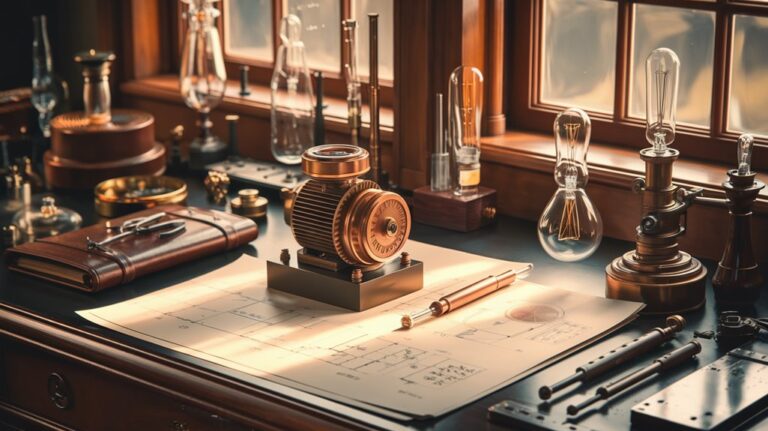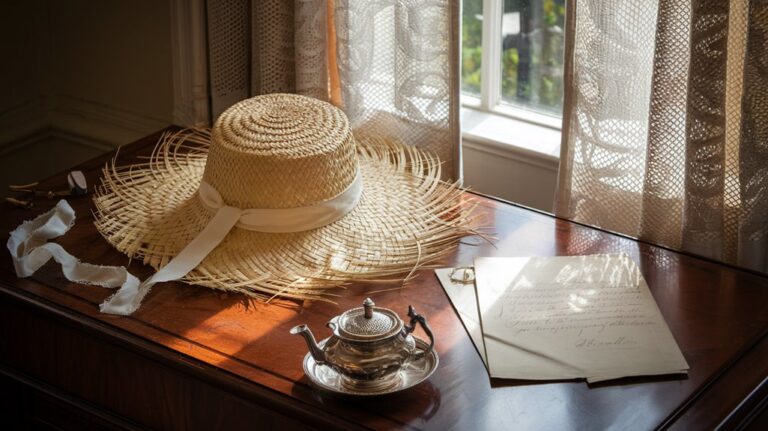Hubert Cecil Booth vs. Soot: The Vacuum Cleaner That Trailed Horses Around London
You've probably never imagined a vacuum cleaner that required horses to pull it through London's sooty streets. Yet in 1901, that's exactly what Hubert Cecil Booth created with his massive "Puffing Billy." This innovative machine didn't just clean—it terrified locals, sparked chaos, and eventually earned the royal seal of approval. Behind this unusual invention lies a tale of persistence, public panic, and the unlikely transformation of an engineering marvel from street menace to cleaning sensation.
The Restaurant Experiment That Started It All
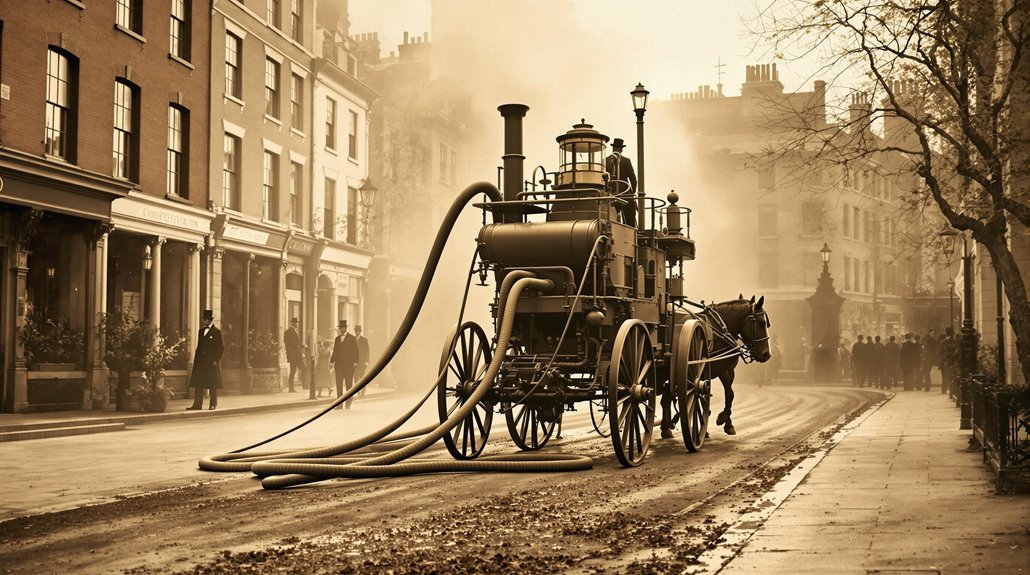
While attending a demonstration of an American dust-removing machine at London's Empire Music Hall, inventor Hubert Cecil Booth found himself unimpressed by its dust-blowing approach.
When he questioned the inventor about using suction instead of blowing, he learned that many had tried and failed.
Much like modern electronic commerce platforms connecting buyers and sellers, this early vacuum demonstration brought together inventors and potential customers seeking cleaning solutions.
Determined to prove dust removal through suction was possible, Booth conducted an impromptu experiment at a Victoria Street restaurant.
You wouldn't believe what he did next – he placed a clean handkerchief on a plush chair and began sucking air through it with his mouth.
Though he ended up choking violently on the dust, this peculiar restaurant innovation revealed something essential: the handkerchief had trapped a significant amount of dirt.
This simple yet effective demonstration proved that suction-based cleaning wasn't just possible – it was the future.
With his background as a mechanical engineer from Central Technical College, Booth had the expertise to transform this crude experiment into a working machine.
Meet "Puffing Billy": A Horse-Drawn Dust Destroyer
Following Booth's dusty restaurant revelation, he set out to build the world's first powered vacuum cleaner – a massive, horse-drawn contraption that would earn the nickname "Puffing Billy."
This bright red and gold behemoth, resembling a fire engine, roamed London's streets in 1901 with its thunderous petrol engine and powerful piston pump.
You'd find Puffing Billy's long hoses snaking through windows as its team of operators tackled the dust in theaters and palaces. Even Kaiser Wilhelm II became a devoted client.
This vacuum innovation, costing £350 (about £45,000 today), revolutionized cleaning technology with its brushless suction system. The successful invention earned Booth world patent rights in 1903.
The machine proved its worth by cleaning Westminster Abbey for Edward VII's coronation and tackling the Crystal Palace after a spotted fever outbreak.
While it wasn't practical for home use, Puffing Billy laid the groundwork for the portable vacuum cleaners you know today.
Red Vans and Royal Seals: Building the BVCC Empire
After securing his revolutionary patent in 1901, Hubert Cecil Booth incorporated the British Vacuum Cleaner Company (BVCC) in 1903, transforming his invention into a thriving cleaning service empire.
His branding strategies were unmistakable – bright red vans and uniformed operators became London's most recognizable cleaning service symbols, even if they occasionally frightened horses and drew noise complaints. The company utilized 800-foot long hoses to service multiple residences simultaneously.
The BVCC's service expansion reached impressive heights through royal connections and high-profile clients:
- Cleaned Westminster Abbey's carpets and Edward VII's coronation venue
- Served the Royal Navy's barracks and the Royal Mint
- Established subsidiary companies for international growth
- Won legal battles against competitors while defending patents
You'll find it fascinating that despite facing competition from household vacuum makers like Hoover, BVCC successfully adapted by focusing on industrial cleaning, maintaining its position in the commercial market. The company's success reached beyond Britain, as they secured prestigious clients including Tzar Nicholas II of Russia.
From Westminster Abbey to Crystal Palace: Notable Cleaning Triumphs
As the British Vacuum Cleaner Company gained momentum in the early 1900s, its most remarkable achievement came from cleaning Westminster Abbey's blue carpets for Edward VII's coronation in 1902.
The company's innovative cleaning techniques impressed the royal household so much that they soon installed vacuum units in both Buckingham Palace and Windsor Castle. The massive petrol-powered engine of the Puffing Billy had to be stationed outside these grand buildings while the cleaning was performed.
You'll find that this royal approval opened doors across Britain's most prestigious institutions. The Royal Naval College at Osborne adopted custom vacuum cleaners around 1905, setting new standards for military facility sanitation. High society members were so intrigued by the new technology that they hosted vacuum cleaning parties to showcase the mechanical marvel.
The company's success wasn't limited to royal venues – they demonstrated their machines' effectiveness in theaters, shops, and factories across London.
Using transparent hoses during society party demonstrations, they showcased how their vacuums could transform cleanliness in any setting, from naval barracks to commercial spaces.
Scaring Horses and Stealing Silver: The Road to Success
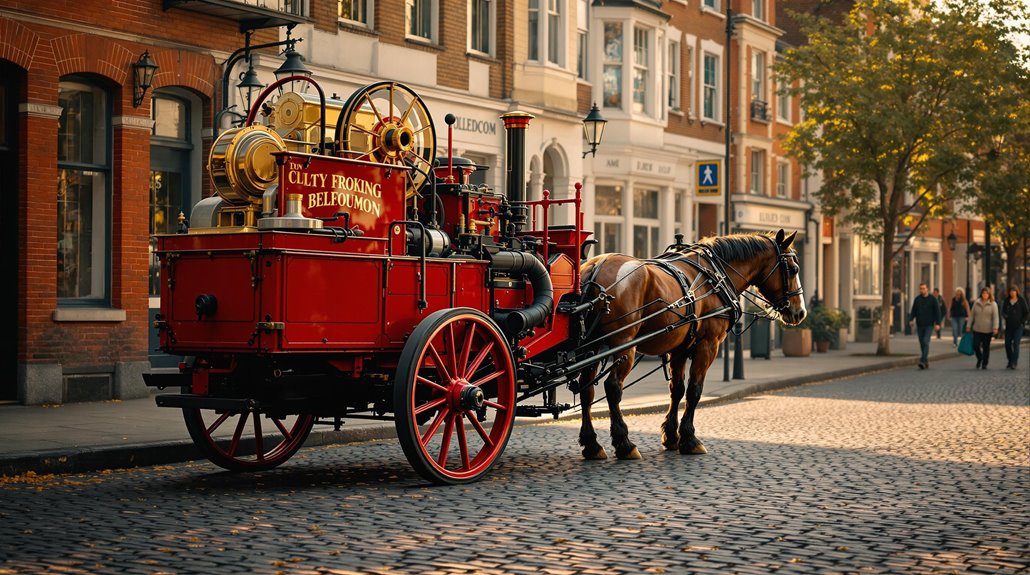
Despite the vacuum cleaner's revolutionary potential, Booth's early demonstrations created quite a stir on London's streets. His vacuum innovation, while groundbreaking, faced numerous challenges in public perception.
You'd have found his coach-sized machine causing chaos as it frightened horses and generated noise complaints across the city.
The most memorable incident occurred at the Royal Mint, where Booth's powerful machine accidentally collected silver dust, leading to his brief arrest. You can imagine the explaining he'd to do!
The machine's success became evident when it was used to clean Crystal Palace, removing tons of accumulated dust through a massive cleaning operation.
Key challenges Booth faced:
 1903, would go on to dominate the vacuum cleaning industry.
1903, would go on to dominate the vacuum cleaning industry.

